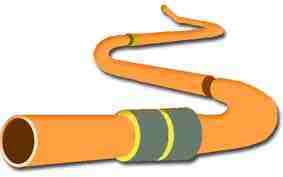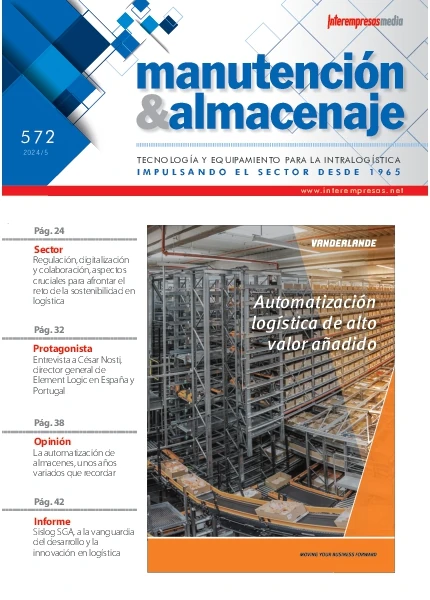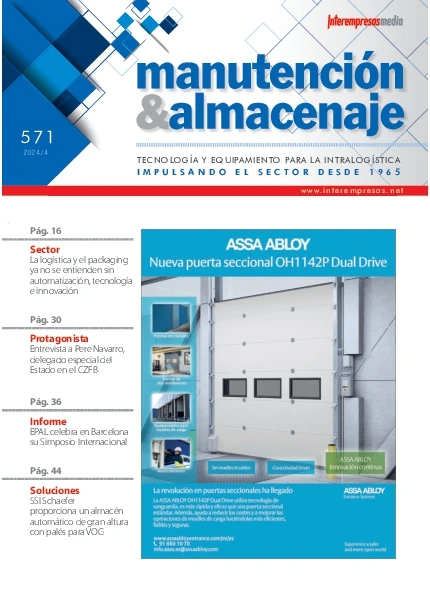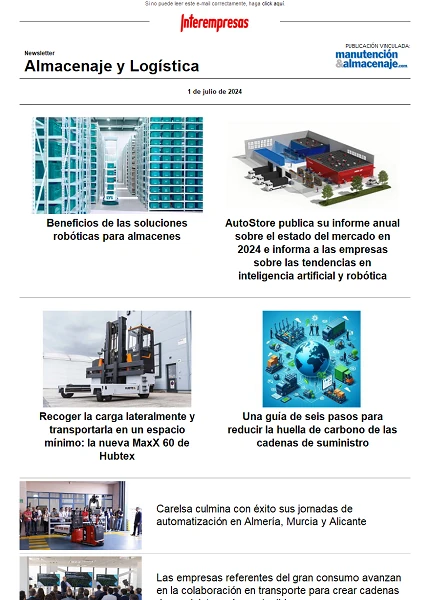This news article was originally written in Spanish. It has been automatically translated for your convenience. Reasonable efforts have been made to provide an accurate translation, however, no automated translation is perfect nor is it intended to replace a human translator. The original article in Spanish can be viewed at Cómo fábricar tuberías de fibra de vidrio
How manufacture glass fibre pipes
15/04/2002
Plastics pipes, usually used in applications such as pipes for water, products are constantly evolving. Proof of this is that in recent years have appeared new materials in the market, such as the polyvinyl chloride of vinyl designed molecularly (MOPVC), the new polyethylene or in the case before us, the polyester reinforced with fiberglass (FRP).
The polyester reinforced with fiberglass, hereinafter FRP, is a material composed and made up of two basic materials: an array, consisting of a synthetic resin type polyester and a reinforcement of fiberglass located within the former.
The matrix of polyester is a perfect for reinforcement Binder, as it ensures the simultaneous participation of all the strands of the same, being also an excellent barrier against chemical and environmental agents.
The fiberglass must provide the armour necessary to achieve the precise mechanical strength to withstand the internal pressure as the external loads in buried pipelines.
Both the matrix and reinforcement, can be provided qualitatively and quantitatively in a wide range depending on the application to go to allocate the pipe to obtain the most appropriate cost/benefit relationship.
In the matrix, available on the market resins of different types, that employees, alone or in combination, provide the anticorrosive nature to the finished product. These resins are susceptible to be jointly formulated with additives to increase any of its properties (UV resistance, abrasion resistance,...).
With respect to the fibers of glass, we can handle them in the form of very thin veil, felts (mat) of several thick, tissue balanced or not, and in continuous threads. Each of them provides a resilient feature itself to the finished product.
For the manufacture of pipes and fittings of FRP on an industrial scale, there are several standardized and internationally recognized methods: standards PS 15/69, DIN 16966 NBS, ASTM D-2996, etc. and that they give rise to pipes with well defined characteristics, with differences due to the process itself and of strengthening materials.
The matrix of polyester is a perfect for reinforcement Binder, as it ensures the simultaneous participation of all the strands of the same, being also an excellent barrier against chemical and environmental agents.
The fiberglass must provide the armour necessary to achieve the precise mechanical strength to withstand the internal pressure as the external loads in buried pipelines.
Both the matrix and reinforcement, can be provided qualitatively and quantitatively in a wide range depending on the application to go to allocate the pipe to obtain the most appropriate cost/benefit relationship.
In the matrix, available on the market resins of different types, that employees, alone or in combination, provide the anticorrosive nature to the finished product. These resins are susceptible to be jointly formulated with additives to increase any of its properties (UV resistance, abrasion resistance,...).
With respect to the fibers of glass, we can handle them in the form of very thin veil, felts (mat) of several thick, tissue balanced or not, and in continuous threads. Each of them provides a resilient feature itself to the finished product.
For the manufacture of pipes and fittings of FRP on an industrial scale, there are several standardized and internationally recognized methods: standards PS 15/69, DIN 16966 NBS, ASTM D-2996, etc. and that they give rise to pipes with well defined characteristics, with differences due to the process itself and of strengthening materials.
Manufacturing with manual lamination (HLU): NBS PS 15/69

This method is usually specified for chemical installations to exist the pipe suitable for every need. In the field of water and sewage East networks manufacturing method is applicable only for accessories. It consists of the manual available on the mold of successive layers of felt or fabric of glass saturated resin to obtain the desired thickness. (There is independent on this type of manufactured documentation).
Mechanical manufacturing "filament winding" (fw): Virginis C-950
Between the different systems of manufacturing of reinforced polyester, which provides products with a better relationship cost/performance is that of "filament winding", consisting of winding of continuous threads on an mould which previously was has been fitted with a corrosion-resistant barriermaking all operations of a continuous and automatic control by computer. A laminate of high mechanical performance, be achieved with this procedure which enables the adoption of much lower thickness than with the method of manual manufacturing. Resistance to corrosion is obtained with the inner pipeline corrosion barrier.
Structure of the wall
The structural wall of FRP pipes consists of three basic phases, each of which have a different composition and a specific purpose. See Figure No. 1.
The first is the corrosion-resistant barrier. Of great importance, since that should provide resistance to aggressive chemicals, resistance to abrasion, absolute tightness and the flatness, so typical in this type of pipe. It is composed of an inner surface smooth, rich in resin of 0.25 to 0.5 mm. thick, reinforced with a veil of followed by a layer of minimum thickness of 1 mm glass, reinforced with a 25-30% by weight of glass felt. This barrier thickness may vary depending the corrosive and abrasive characteristics of the fluid to vehicular.
For its part, the structural layer must provide the mechanical strength to withstand the efforts to which the pipe is submitted. FW pipe is formed with a 65-75% of continuous glass threads interlocking, prepared with the proper angle to obtain the higher resistance in the required direction (exclusive feature of composite materials). The thickness of this layer and the angle of roll will determine the mechanical strength of the pipe in the circumferential and longitudinal direction of the same. This layer is supported the placement of inert loads (silica, quartz or similar).
In the accessories manufacture HLU, the structural layer is composed of 30-40% of glass felt (older 6.5 mm thickness incorporates fabric of glass). The amount of these materials shall be determined by its resistance mechanical, lower than the previous.
The last phase is the external protection. Its purpose is to provide resistance to external agents, they are either environmental or land. It is usually composed by a layer of resin of 0, 2-0, 3 mm. thick. You provide an important external aggression on the pipe will be advisable to place before the resin layer, a corrosion barrier as described above. This exterior protection may contain, if the case so requires, additives for protection from ultraviolet radiation.
The first is the corrosion-resistant barrier. Of great importance, since that should provide resistance to aggressive chemicals, resistance to abrasion, absolute tightness and the flatness, so typical in this type of pipe. It is composed of an inner surface smooth, rich in resin of 0.25 to 0.5 mm. thick, reinforced with a veil of followed by a layer of minimum thickness of 1 mm glass, reinforced with a 25-30% by weight of glass felt. This barrier thickness may vary depending the corrosive and abrasive characteristics of the fluid to vehicular.
For its part, the structural layer must provide the mechanical strength to withstand the efforts to which the pipe is submitted. FW pipe is formed with a 65-75% of continuous glass threads interlocking, prepared with the proper angle to obtain the higher resistance in the required direction (exclusive feature of composite materials). The thickness of this layer and the angle of roll will determine the mechanical strength of the pipe in the circumferential and longitudinal direction of the same. This layer is supported the placement of inert loads (silica, quartz or similar).
In the accessories manufacture HLU, the structural layer is composed of 30-40% of glass felt (older 6.5 mm thickness incorporates fabric of glass). The amount of these materials shall be determined by its resistance mechanical, lower than the previous.
The last phase is the external protection. Its purpose is to provide resistance to external agents, they are either environmental or land. It is usually composed by a layer of resin of 0, 2-0, 3 mm. thick. You provide an important external aggression on the pipe will be advisable to place before the resin layer, a corrosion barrier as described above. This exterior protection may contain, if the case so requires, additives for protection from ultraviolet radiation.
Systems Union
Between the different systems of Union, the most widely used in networks of water and sanitation facilities are the Union Bell and Spike, the mechanics Union, chemistry, and the bridada.
The Union Bell and spike is a type of integral Board, composed of a mouthpiece or Bell that spike is introduced. This spigot is machined in order to accommodate one or two boards toric of elastomer material. The purpose of them is the ensure the tightness of the Union by pressure against the inside wall of the Bell. This Board has very little axial resistance and is very suitable for pipe buried by the ease and speed of Assembly.
There is a version of this Board that includes a retaining ring hosted between Bell and spigot in order to provide the Union of axial resistance. This solution is applicable in submarine outfalls.
For its part, the mechanics Union consists of a mechanical coupling formed by a clamp or founded metal and an inner lip joint. This Union has no axial resistance and is also well-suited for pipeline buried by the ease and speed of installation.
The chemical Union is the bandaging of the two parties to merge with the same base material, thus obtaining unions without insert any piece or mechanism to make monolithic pipes. The length and thickness of the Union depend on the diameter of the pipe and the conditions of service. This Union resists axial traction efforts.
Finally, the bridada Union is mainly used to make connections with other types of pipe, valves, instrumentation, etc. equipment conventional It has flanges or Walloon crazy DIN or ANSI flange that cover any need.
The Union Bell and spike is a type of integral Board, composed of a mouthpiece or Bell that spike is introduced. This spigot is machined in order to accommodate one or two boards toric of elastomer material. The purpose of them is the ensure the tightness of the Union by pressure against the inside wall of the Bell. This Board has very little axial resistance and is very suitable for pipe buried by the ease and speed of Assembly.
There is a version of this Board that includes a retaining ring hosted between Bell and spigot in order to provide the Union of axial resistance. This solution is applicable in submarine outfalls.
For its part, the mechanics Union consists of a mechanical coupling formed by a clamp or founded metal and an inner lip joint. This Union has no axial resistance and is also well-suited for pipeline buried by the ease and speed of installation.
The chemical Union is the bandaging of the two parties to merge with the same base material, thus obtaining unions without insert any piece or mechanism to make monolithic pipes. The length and thickness of the Union depend on the diameter of the pipe and the conditions of service. This Union resists axial traction efforts.
Finally, the bridada Union is mainly used to make connections with other types of pipe, valves, instrumentation, etc. equipment conventional It has flanges or Walloon crazy DIN or ANSI flange that cover any need.
The importance of the raw materials
Some of the raw materials used by the industry for the manufacture of pipes and accessories are the resins, glass and raw materials auxiliary reinforcements. In the field of resins used, for example, those of ortoftálica polyester, polyester isoftálica, polyester, vinylester or polyester bisfenólica. These in particular are several interesting features, such as: cured at room temperature, low degree of toxicity, the fact that are chemically inert and very strong fibers of glass Union.
For its part, glass reinforcements are made with two different types: glass type "C", which has good inertia with respect to chemical corrosion, and type "E", which has a very high mechanical resistance.
In addition to resins and glass reinforcements, we find auxiliary raw materials. Accelerate (catalysts) additives are used in the process of strengthening of resins and inert material that can be added to increase the thickness (usually silica sand). The production of FRP pipe, made of Filament Winding system and sand in the structural layer is standardized by VIRGINIS C950-81 (Rev.88) and by the major national standards, including the links.
Pipes manufactured as well have a level of quality equal to those pipes with no sand in the structural layer. National and international standards provide for a quality control of the manufacturing system for these pipes.
The introduction of one or more layers of sand in the structural layer is used to achieve a greater width of the section with the consequent greater distance from structural elements (fiber glass and resistant resin sections) to the neutral axis; all in order to ensure that the pipeline have a greater rigidity.
Since: CERs = EI / D3 where,
E = modulus of elasticity
I = moment of inertia
D = diameter of the pipe
The fact of inserting an inert as the arena, which is an inert to controlled quality (monogranulométrico, siliceous or quartz, with not more than 0.5% humidity), does not reduce the cost of production of the pipe, given that each layer of sand is impregnated with resin and is completed with a parallel of continuous glass fiberprestressed shaped rovingn,
For its part, glass reinforcements are made with two different types: glass type "C", which has good inertia with respect to chemical corrosion, and type "E", which has a very high mechanical resistance.
In addition to resins and glass reinforcements, we find auxiliary raw materials. Accelerate (catalysts) additives are used in the process of strengthening of resins and inert material that can be added to increase the thickness (usually silica sand). The production of FRP pipe, made of Filament Winding system and sand in the structural layer is standardized by VIRGINIS C950-81 (Rev.88) and by the major national standards, including the links.
Pipes manufactured as well have a level of quality equal to those pipes with no sand in the structural layer. National and international standards provide for a quality control of the manufacturing system for these pipes.
The introduction of one or more layers of sand in the structural layer is used to achieve a greater width of the section with the consequent greater distance from structural elements (fiber glass and resistant resin sections) to the neutral axis; all in order to ensure that the pipeline have a greater rigidity.
Since: CERs = EI / D3 where,
E = modulus of elasticity
I = moment of inertia
D = diameter of the pipe
The fact of inserting an inert as the arena, which is an inert to controlled quality (monogranulométrico, siliceous or quartz, with not more than 0.5% humidity), does not reduce the cost of production of the pipe, given that each layer of sand is impregnated with resin and is completed with a parallel of continuous glass fiberprestressed shaped rovingn,
Related Companies or Entities
ISB Ibérica - Euro Bearings Spain, S.L.
Meeting y Salones, S.A.U. - Salón Internacional de la Logística

































